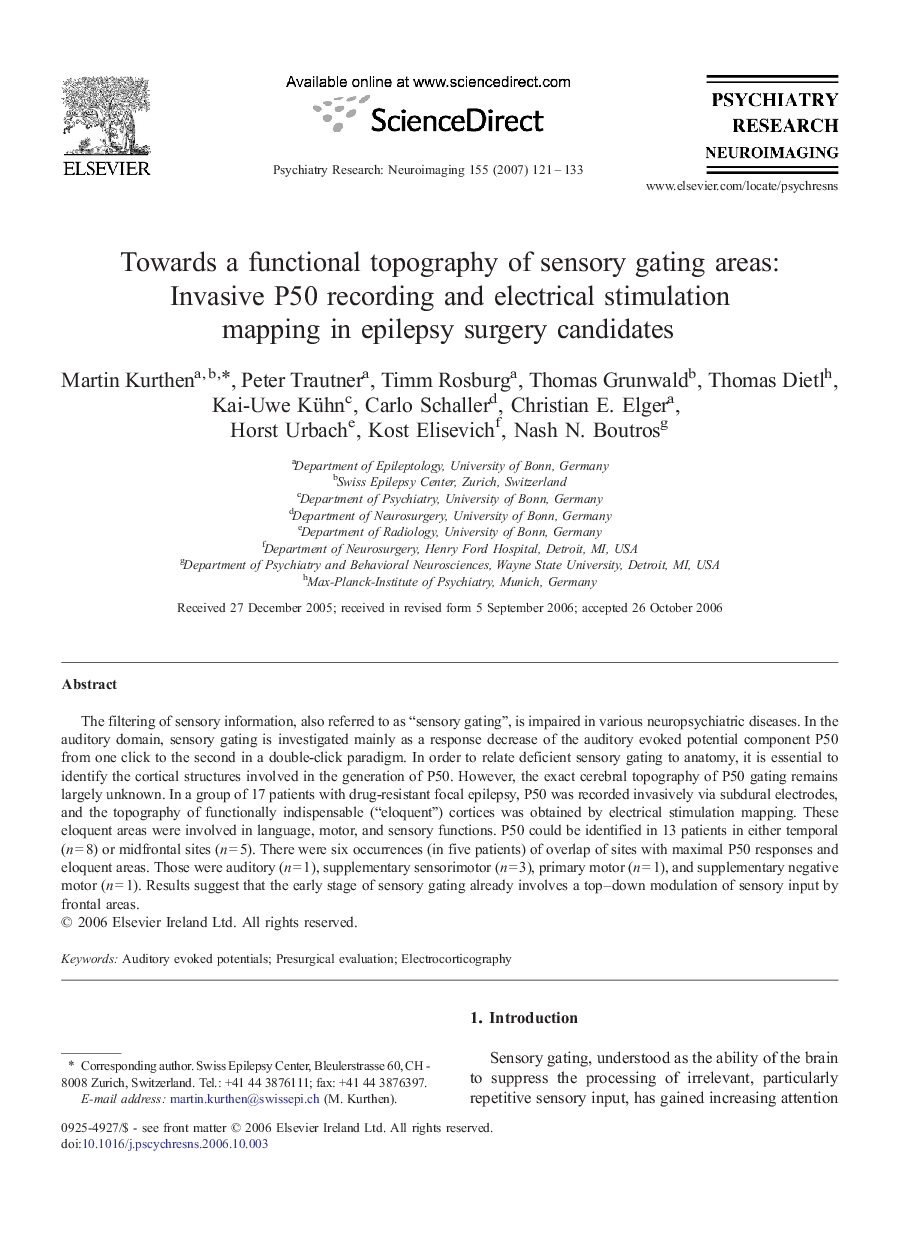| Article ID | Journal | Published Year | Pages | File Type |
|---|---|---|---|---|
| 334665 | Psychiatry Research: Neuroimaging | 2007 | 13 Pages |
The filtering of sensory information, also referred to as “sensory gating”, is impaired in various neuropsychiatric diseases. In the auditory domain, sensory gating is investigated mainly as a response decrease of the auditory evoked potential component P50 from one click to the second in a double-click paradigm. In order to relate deficient sensory gating to anatomy, it is essential to identify the cortical structures involved in the generation of P50. However, the exact cerebral topography of P50 gating remains largely unknown. In a group of 17 patients with drug-resistant focal epilepsy, P50 was recorded invasively via subdural electrodes, and the topography of functionally indispensable (“eloquent”) cortices was obtained by electrical stimulation mapping. These eloquent areas were involved in language, motor, and sensory functions. P50 could be identified in 13 patients in either temporal (n = 8) or midfrontal sites (n = 5). There were six occurrences (in five patients) of overlap of sites with maximal P50 responses and eloquent areas. Those were auditory (n = 1), supplementary sensorimotor (n = 3), primary motor (n = 1), and supplementary negative motor (n = 1). Results suggest that the early stage of sensory gating already involves a top–down modulation of sensory input by frontal areas.
